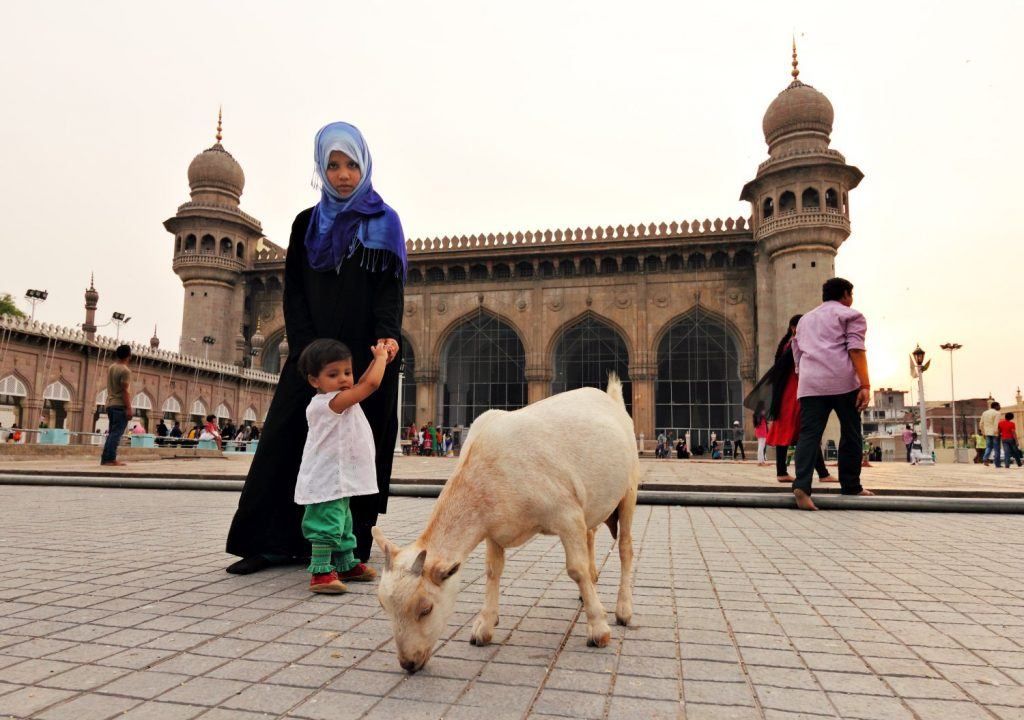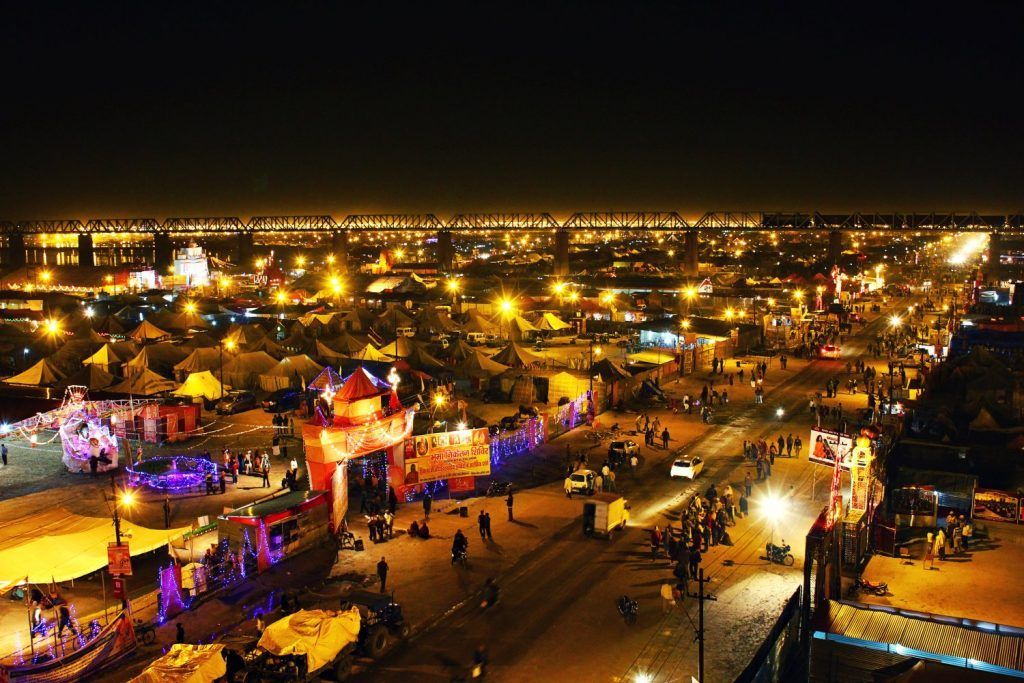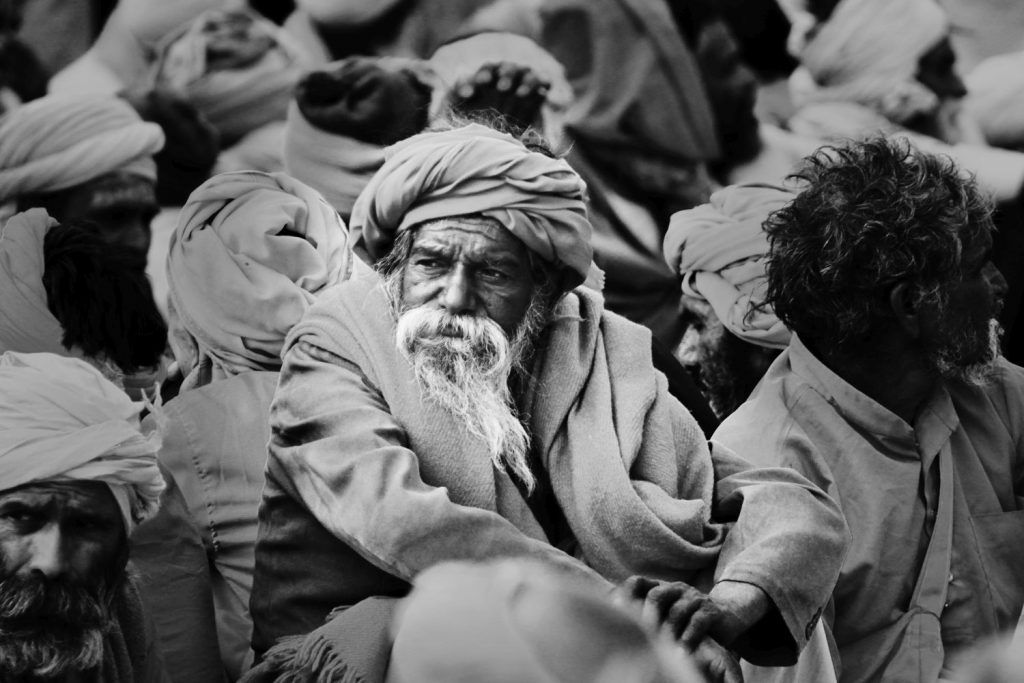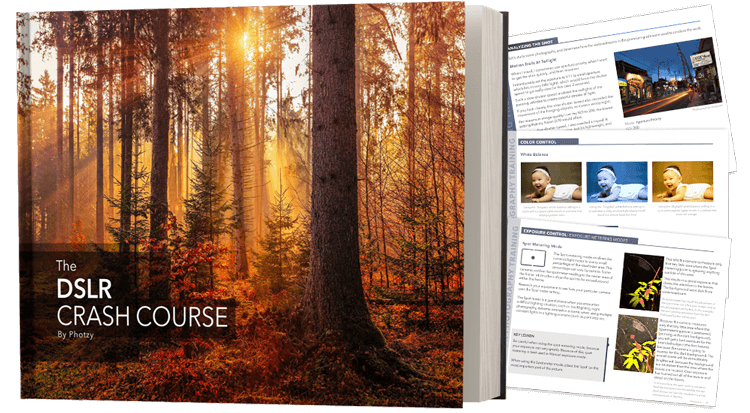14 Practical Reasons Your Photos Are Not Quite As Good As You Want Them To Be

New / Noteworthy
EDITOR’S NOTE: If you’re looking for a quick way to learn the basics of photography take a peek at our popular cheat sheets: The Snap Cards. If you missed out on your set last time, they’re available again and on-sale right now.

Photo by Ritesh Saini
When you take out the camera to photograph, you almost always have certain expectations from the photo. You want the photo to capture how you saw or imagined something. More often than not, the photo doesn’t meet your expectations. It’s either blurry or too bright; the colors look unusual or the composition is unappealing.
Many a times, the photo fails to evoke emotion that the actual scene originally did. Sometimes the opposite happens, although rarely, when a photo exceeds your expectations. Luck plays a role, of course, as we cannot control every aspect of a photograph all the time. But instead of leaving everything to luck, you can improve your chances of capturing a ‘good’ photograph by knowing why your photos don’t turn out the way you want them to. Let’s look at some of the reasons.
1. You Don’t Pay Attention to the Composition
Loosely composed photographs lack the ability to hold a viewer’s attention. Too much clutter and uninteresting framing contributes to an image that lacks punch. Before shooting, think about how you want to frame a shot and ask yourself what should and should not be included within the frame. Also check the edges and the corners for unsuspecting objects that may spoil your shot. Get to know the rules of composition (and when to break them) and your photographs will reap the rewards.
This Understanding Composition guide is a great place to start.
2. You Don’t Know the Basics of Exposure
The exposure Triangle – the triad of Shutter Speed, Aperture and ISO, lets you control how a photograph is created. Shooting in Auto mode doesn’t allow you any control over these settings, which is why you should switch to Manual mode. Understanding these settings opens up a whole world of photographic opportunities (light painting, photographing light trails, seascapes, Milky Way, and much more).
When photos turn out too dark or too bright for your liking, on using the settings that the camera suggests, you can tweak the settings to ‘correct’ the exposure for you. This is called exposure compensation where you deliberately underexpose or overexpose a shot to expose for the subject of your choice. You can get the basics of understanding and controlling exposure with our DSLR Crash Course.
3. You Don’t Experiment With the Perspective
Photographing the same scene from a different perspective can completely change the mood and impact of a shot. Take a landscape shot, for example. The same scene can be shot from close to the ground for a totally different mood than shooting it from just a bit higher. Altering perspective means changing the height and the angle of your camera for a substantially different composition than before.
While it is usually recommended to shoot portraits at the eye-level, experimenting with different perspective can give you some amazing results. An aerial shot of a city is completely different from a cityscape shot from the ground – the difference lies in perspective.

Photo by Ritesh Saini
If you would like to experiment with perspective in photography, check out our Understanding Composition guide.
4. You Don’t Understand How Lighting Affects a Photograph
Good lighting can make a huge difference to a photograph. Photographers prefer early morning sunlight or late afternoon sunlight for a reason. It not only provides a soft and warm light, but also eliminates harsh shadows caused by midday sun. It works great not just for landscapes but also for portraits. But that’s not the only kind of light you can utilize in photography. There’s artificial lighting too and accompanied with light modifiers, you can pull off some great lighting effects.
And don’t forget that pop-up flash that always accompanies you as it can come quite handy as a fill-light or a standalone light in desperate situations.
5. You Don’t Post-Process Your Photos
The first step in creating great photos is to get the shot right in-camera. The next step, even though optional but highly recommended, is to post-process your photos to your liking. No amount of post-processing can save a truly bad shot but it can definitely take a good shot to the level of amazing. How much post-processing should go into a shot is subjective and the options available to you can really be endless in the kind of look an image can take. Read the most important steps in post-processing here.

Photo by Ritesh Saini
6. You Haven’t Taken Up a Photography Project
A photography project is a great way to improve your photography and keep you motivated to look for something new through your camera every time you photograph. A 365-Project, for example, where you photograph every day for a year, can result in a collection of 365 images that showcase your unique photography style. A photography project can also make you get past photographer’s block and get your creative juices flowing again.
Similar to 365-Project is a 52-Week-Project where you photograph every week for a year to come up with a collection of 52 photos. Other ideas include: photographing 100 strangers, theme-based ideas like colors, shapes, shadows, nature, and so on. Setting up a timeline for the project (i.e. photographing every day or every week) usually works as a great motivator for you to stick to the project.
Note: Take a look at 65 beautifully designed, print-at-home project sheets that will give you over 200 photography assignments for you to try here – Check out the Action Cards.
7. You Don’t Have a Well-Defined Subject in Your Photo
Every photograph needs to show something that can keep a viewer interested in the photograph. It’s called the subject of the photo. Photographs with a well-defined subject allow the viewer to appreciate the photograph better without making him or her try to figure out what the photograph is about. Before you release the shutter, ask yourself what is the subject of the photograph that you’re capturing. Street photography, for instance, presents you with a wide variety of subjects that you need to choose and frame inside your viewfinder before capturing, sometimes all within a matter of seconds, before the opportunity vanishes.

Photo by Ritesh Saini
If you would like to gain a better understanding of photography fundamentals, do take a look at our latest e-book DSLR Crash Course. It will help you learn step-by-step how to capture good photos consistently by way of comprehensive training and plenty of photography exercises. Click here now to check it out.
8. You Are Not Studying Other Photographers' Works
The works of notable photographers can inspire you a lot. From composition techniques to post processing ideas, there’s a great deal to learn. Your favorite photographer’s photography style can inspire you to create your own unique style. You can study a photograph in its lighting, composition, focal length and depth of field, setup, timing, post-processing, and the thought process that went into creating the image. Emulating their work can also help you learn these aspects better while at the same time improving and adding to your skills as a photographer.
Take a look at 15 Exclusive Case-Studies on Powerful Images, From Travel Documentary Photographer, Mitchell Kanashkevich – Check out Powerful Imagery Guide.
9. You Are Totally Ignoring the Background

Photo by Ritesh Saini
Learn to simplify your compositions here – Check out Understanding Composition
10. You Don’t Know Your Camera Well Enough
Having a good understanding of your camera’s features and what it is capable of doing can allow you to really master photography. More often than not, people stick to the Auto mode and never try to learn the Manual modes (M, Av or Tv modes) which can give them a better control over the photography process. Knowing the capabilities of your camera allows you to be more creative with your photography and produce images that you wouldn’t have created otherwise. Some examples include: learning to use flash creatively, shooting in raw, understanding White Balance, using aperture to control depth of field, using shutter speed for creative effects, and much more.
This new eBook, will take you by the hand and lead you step-by-step in discovering photography skills using your DSLR… – Check out the DSLR Crash Course.
If you would like to gain a better understanding of photography fundamentals, do take a look at our latest e-book DSLR Crash Course. It will help you learn step-by-step how to capture good photos consistently by way of comprehensive training and plenty of photography exercises. Click here now to check it out.
11. You Don’t Visualize What You’re Going to Shoot
Imagine a painter who starts from a blank canvas and comes up with a painting that brings to life what they visualised in their mind. Photography shouldn’t be much different, especially when you can control what the final image should look like. Previsualization enables you to create the image in your mind’s eye before you actually photograph it. When you look at a great scene, you should compose the photo in your mind, taking into account what focal length would work great, what perspective would look better, and any other compositional tools that you can think of.
Get Beyond the ‘Rule of Thirds’ And Produce Truly Outstanding Images With Advanced Composition – Check out the Advanced Composition guide.
12. Your Photograph Doesn’t Convey a Story or Message
“A picture is worth a thousand words”, says a popular adage. And it certainly is true. You often come across photographs where you can’t help but keep looking at them because they tell you a story. The most iconic images of the past all encapsulate a message that the viewer instantly connects to upon looking at the photograph. While the adage, in a way, applies to all kinds of photographs, it is so much more applicable to photos that have a human element in them. Street photographs (or candid photos, for that matter) often convey a message or tell a story through the single frame that has been captured.
Get a simple and practical understanding of using storytelling to make your photographs stand out here – Check out Effective Storytelling.

Photo by Ritesh Saini
13. You Don’t Get Your Photos Critiqued
Getting feedback on your photos is a great way of improving your photography. It helps you get a fresh perspective on your photos and enables you to see the aspects that you overlook sometimes. But the feedback shouldn’t be limited to “The photo looks great” or such. That’s why critical feedback is necessary. You can request a photographer friend to look at your photos and provide you tips on getting better. Look for tips on improving composition, framing, and exposure and then gradually move to advanced photography techniques, and post-processing.
Join us on Facebook and feel free to share your work for feedback there – Photzy Facebook.
14. You Don’t Practice Enough
Practice makes perfect. No amount of learning will help you get great shots if you don’t put it to practice. And you’ll have to practice often. You may get lucky in your initial attempts and get a superb shot without much effort but to create amazing shots consistently, you will have to keep at it. Henri Cartier-Bresson famously said, “Your first 10,000 photographs are your worst.” In this digital age, you can conveniently change the figure to 100,000. There’s no shortcut: keep practicing and learn from your mistakes and get better at photography.
If you aren’t getting out shooting enough, we have 44 print-at-home key photography lessons that you can take with you anywhere. – Check out the Snap Cards™

Photo by Ritesh Saini
Keep photographing, folks. Don’t let these reasons stop you from accomplishing the photograph that you’ve always wanted.
BONUS: I've got something special for you on the next page...
If you would like to gain a better understanding of photography fundamentals, do take a look at our latest eBook The DSLR Crash Course. This eBook, will take you by the hand and lead you step-by-step in discovering photography skills using your DSLR…
You’ll get case-studies, how-to instruction and a self-check quiz. Plus it includes free printable cheat sheets for your camera bag to ensure you don’t forget a step when setting up.
If you missed out on your copy last time. It’s available again, and on sale right now.
Click below now, to read about it on the next page…

About Ritesh Saini
Ritesh has been photographing since 2010 and his photographic interests have varied from nature and landscapes to street photography. You can see his photography on Flickr or on his website. He recommends the best-selling guide, The DSLR Crash Course to learn to understand and control your camera.


